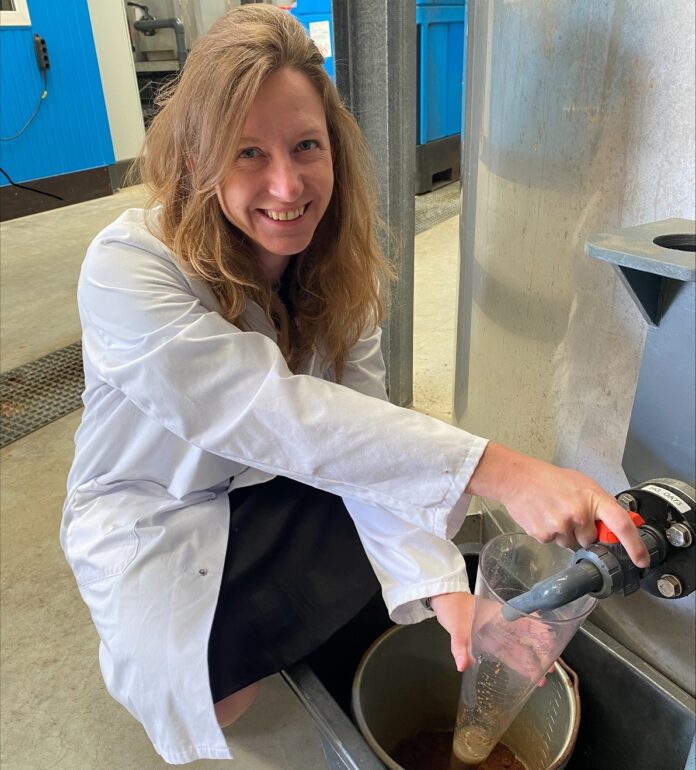Brought to you by PWNT
By Elisabeth Vaudevire
In their adaptation to climate change, many drinking water utilities are facing challenges related to increasing and more persistent dissolved organic matter (DOC) in their surface water sources. The main challenge is often controlling disinfection byproducts (DBPs) after chlorination. Also, the removal of DOC early in the treatment is essential for downstream processes, i.e., membrane and disinfection/oxidation, to perform efficiently and for improved final water quality. While conventional treatment with coagulation can remove hydrophobic DOC and the high molecular fractions of hydrophilic DOC, this process is mainly designed for turbidity removal and requires “enhanced” operation at lower pH to remove higher amounts of DOC.
Strong base anion exchange resins have demonstrated high affinity for DOC, specifically for the low molecular fractions of the hydrophilic DOC which are typically reluctant to removal by coagulation. These fractions of DOC, often referred to as the humic and fulvic acids, are also commonly related to the formation of DBPs in drinking water treatment. Depending on the DOC characteristics in the raw water source, the implementation of ion exchange can beneficially replace or complement coagulation for DOC removal, which improves many water treatment processes. Conventional configurations of ion exchange processes in fixed/ packed beds are limited in use as an early treatment step by the presence of suspended matter and turbidity that causes bed clogging, and these systems are often relegated to later in the treatment train, downstream of filtration.
The Suspended Ion Exchange, or SIX® process, was developed at PWNT (the Netherlands) as a response to this engineering challenge. The process utilizes the strong base anion exchange resin in suspension and in single pass. During operation of the SIX®, a small dose of resin (i.e., 10 to 30 mL/L) is added to the water and kept in suspension while traveling though the contactor ensuring enough contact time. The mixing of the resin ensures the resin to be suspended and provides sufficient energy for very effective contact between the resin and the dissolved organics in the water. After the contact time, the resin is separated from the treated water and collected for immediate regeneration (much like a single pass operation) which helps maintain the fast adsorption kinetics and avoids biofouling on the resin. Finally, to minimize the amount of salt used, the regenerant solution is recycled five times during the regeneration of the resin prior to disposal.
To date, the SIX® process has been implemented at full scale in the Netherlands and in the United Kingdom, in addition to numerous pilot locations across Europe and the USA. The long-term trends using a commercially available resin at these locations have demonstrated DOC removals between 40% and 60% depending on the DOC characteristics, raw water compositions, and process conditions. Using the liquid chromatography – organic carbon detection (LC-OCD) fractionation method, it is clear that the resin preferentially removes humic fractions of the DOC (50 to 80% removal) compared to the non-humic fractions (10 to 30% removal). As a direct result, the UV transmittance of the treated water increased between 10 and 25% percentage points across the locations. A main benefit of applying the SIX® process is its impact on the formation potential of DBPs in chlorinated systems, which studies showed can be reduced by up to 71 % for trihalomethanes (THMs) and 72 % for haloacetic acids (HAA) after SIX® pre-treatment.
Aside from their affinity for DOC, the strong base anion exchange resins used in the SIX® process also interact with the inorganic anions in the water source. Typically, the affinity order is influenced by the concentration and charge density of each anion; and often results in the following preferred adsorption: SO4>DOC>NO3>Cl ≈ HCO3. Whereas the removal of nitrate (typically between 0% and 50%) is often beneficial for the water quality, bicarbonate (0% to 50% removal) and sulphate (up to 80% removal) are usually considered to be scavengers, which requires more chloride exchange and can increase the corrosivity of the treated water. It is, however, possible to mitigate the uptake of inorganic anions by optimizing the resin regeneration. Research on pilot scale also demonstrated the possibility of trading the sodium chloride, which is conventionally used to regenerate the resin, for sodium bicarbonate. This alternative regeneration salt can be used when the chloride level in the treated water is a limiting factor. It also helps reduce the corrosivity of the water and gives more options at some sites for dispose of the waste brine.
The SIX® process conditions are favorable to the longevity of the resin. At one installation, analysis of the resin demonstrated that, after five years of operation in the SIX®, the Lanxess Lewatit S5128 maintained over 90% of its exchange capacity and displayed less than 2% broken beads. After nine years, over 70% of its exchange capacity was maintained and less than 5% of broken beads were observed. In terms of resin losses, design features of the resin separation in the SIX® are key, and thus far, the two full-scale SIX® installations are still operating with their original resin batch.
The suitability of the SIX® process for a particular water source can be demonstrated with a simple jar test. The example below displays the reduction of DOC from a lake water source in time at different resin doses. The measurement of UV transmittance can also be used as a surrogate parameter to DOC for these types of evaluations.
Finally, PWNT is working in collaboration with resin manufacturers towards improving the adsorption capability of the SIX® process to address the current and upcoming challenges for drinking water utilities. For example, much of the research capacity is currently dedicated to the potential removal of PFAS with the SIX® process.









